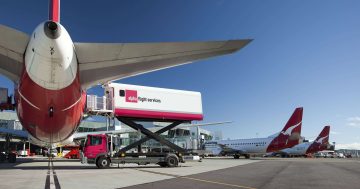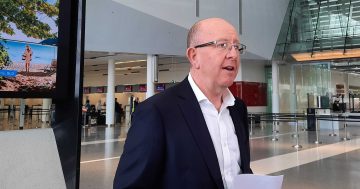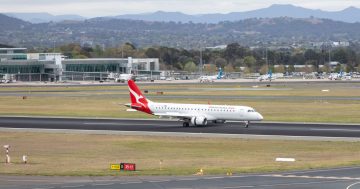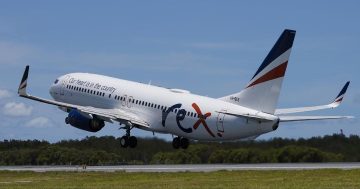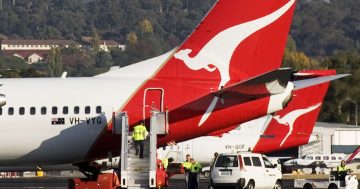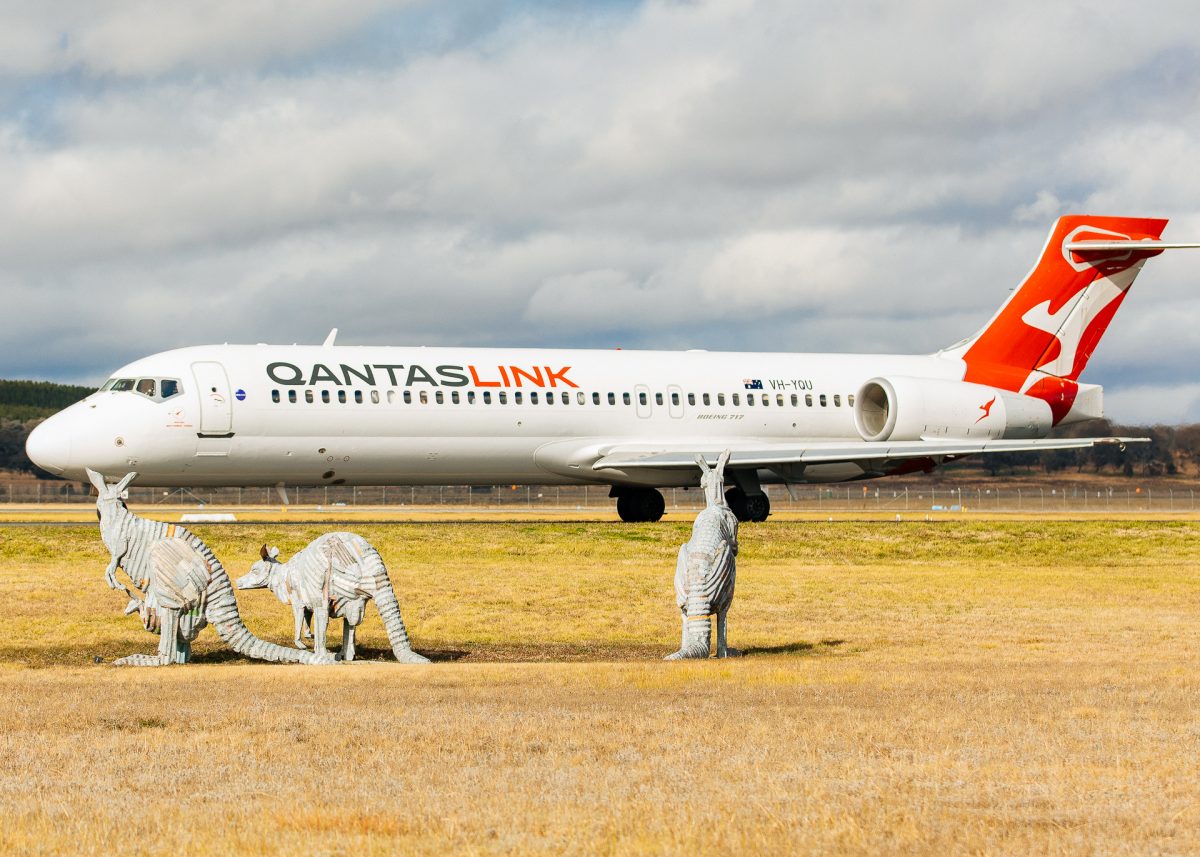
Qantas cancellations have again increased, particularly between Canberra and Sydney. Photo: Canberra Airport, Facebook.
Qantas has backslid on the number of flights it cancels on its Canberra routes, particularly to and from Sydney and Melbourne.
Domestic airline performance reports over the September quarter show the improvements that began late last year have evaporated since March, when only 2.5 per cent of Qantaslink flights (10) and just 0.8 per cent of Virgin flights (2) to Sydney were cancelled.
There were only two Melbourne flights cancelled.
The next month, cancellations of Sydney flights crept up to 3.9 per cent for Qantaslink (14) and 3.8 per cent for Virgin (8). Qantaslink also cancelled 14 Melbourne flights, or 5.3 per cent.
By September, the Sydney figure had blown out to 9.2 per cent for Qantaslink (31) and 5.7 per cent for Virgin (13). Travelling from Sydney, Canberra-bound travellers faced 25 Qantaslink no-shows or 7.4 per cent of flights. Virgin cancelled 13 over the month, 5.3 per cent of flights.
Overall, travellers between Canberra and Sydney endured some of the worst reliability in the country, with a cancellation rate of 7 per cent for Canberra-Sydney and 6 per cent flying the other way.
Out of the 802 flights Qantas operated between the two capitals in September, 58 were cancelled, or 7.2 per cent.
But this pales in comparison to August 2023 when Qantas apologised for the “unacceptably high” rate of cancelled flights between Canberra and Sydney after it was revealed nearly 15 per cent of flights between the two cities in August didn’t take off.
At the time, Canberra Airport CEO Stephen Byron called on the Federal Government to step in and hold airlines accountable for poor performance.
Flying to Melbourne, Canberra travellers on Qantaslink had to deal with 11 cancelled flights or 5.5 per cent and on the return leg, 13 no-shows or 6.6 per cent.
On the Brisbane run, Qantaslink canned eight flights or 5.6 per cent and only 68.9 per cent departed on time.
Qantaslink also recorded the lowest rate of on-time arrivals and departures for Canberra Airport at 75.3 per cent and 75.8 per cent, respectively. However, that’s better than its performance last November when it was 68.4 and 65.8 per cent.
Travellers to and from Adelaide had a better time of it, with that route in the top 10 on-time performers, with flight percentages in the mid-80s.

The demise of Rex on metropolitan routes has led to higher fares. Photo: Rex.
The flight performance figures come after the ACCC said domestic airline passengers faced less choice and higher airfares following Rex’s recent exit from services between metropolitan cities.
The competition watchdog said that since Rex suspended operations on its services between metropolitan cities on 31 July 2024, the average airfare on all major city routes had increased by 13.3 per cent to September 2024.
The Domestic Airline Competition report released on Tuesday found that airfares for ‘best discount economy’ tickets had increased from July 2024 to October 2024 across many of the services between metropolitan cities that Rex no longer operates on.
The cost of flying to Melbourne from Canberra has soared by 54 per cent to $298.
Despite jet fuel prices falling by 41 per cent in the 12 months to September 2024, domestic airfares have remained at similar levels for the same period.
ACCC Commissioner Anna Brakey said the recent spike in airfares corresponded with a less competitive domestic airline sector after Rex’s exit from 11 of the 23 services between metropolitan cities.
“While we also typically see a seasonal peak in air travel in September due to major sporting events and school holidays, there were additional pricing pressures this year,” she said.
“Passengers were no longer able to access the lower fares that Rex offered, and airline seating capacity decreased following Rex’s exit. This, in turn, has contributed to higher airfares.”
Since July, the number of seats on services between metropolitan cities fell by 6.0 per cent, while the number of domestic passengers travelling on these routes remained relatively stable, which led to fuller flights.
Earlier this year, almost half of all passengers flew on routes with either three or four airline groups, but now no domestic route is serviced by more than two major airline groups, with Qantas Group and Virgin Australia garnering 98 per cent of domestic passengers.
While domestic airfares soared, the average cost of an international economy airfare departing from Australia fell on average by 5 to 10 per cent from July-September 2023 to July-September 2024.












